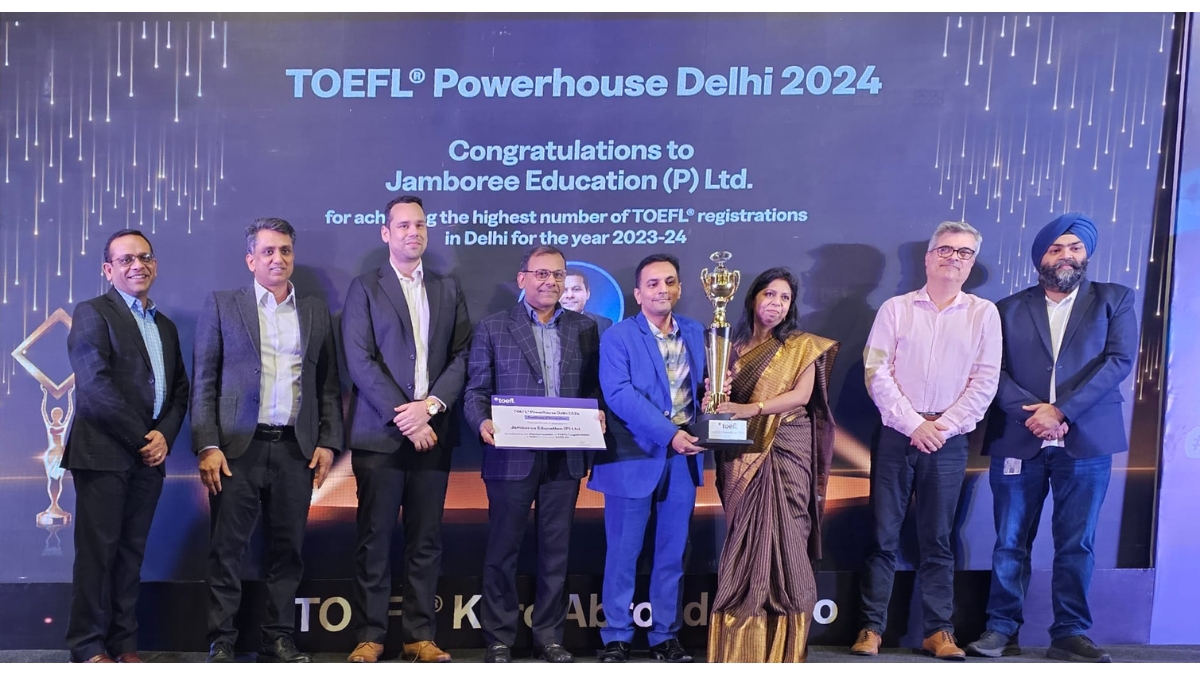‘Opportunity for India in semiconductor fabs if…’: ICANN CIO Ashwin Rangan
India possesses tremendous scientific talent for technology growth. Yet, we haven’t been able to emerge as a semiconductor Technology leader; IP ownership in cutting edge technology still evades India in most segments.
What are India’s chances of breaking into the elite club of technology leadership?
Ashwin Rangan, Senior VP of Engineering and Chief Information and Innovation Officer, ICANN (Internet Corporation for Assigned Names and Numbers) who was conferred the prestigious 2022 SoCal CIO of the Year ORBIE Award in US recently, is consulted by many countries and corporates, for technology strategy. In this interview, he sheds light on emerging technologies, the complexities of semiconductor manufacturing, and India’s strengths and weaknesses.
Q. Where does India stand in the IT ecosystem?
In the ecosystem boundaries, at the top of the funnel, there’s hardware and software. The top layer in software is applications, below that is embedded software. Semiconductors come alive when real time operating systems software enable componentry. There is value-add and value-capture in both these layers.
In hardware, there’s an entire stack of technologies, with large industries responsible for manufacturing them. These are computing, networking and storage devices like smartphones, tablets, etc. Mechanical componentry and semiconductors need to be sourced from different parts of the world to bring these devices together.
At the highest level, this requires assembling circuit boards into plastic and metal casings, to create these final devices; there’s value-add and capture there. Then, there’s circuit board manufacturing, where packaged semiconductors (chips) are soldered onto circuit boards. Very low value-add work, but nonetheless required. Going a level deeper, there is backend semiconductor assembly and packaging, which tends to be highly automated.
Finally there’s semiconductor wafer fabrication this is where the bulk of value addition occurs. When you break that into logic circuits and memory circuits, logic circuitry is highly sensitive intellectual property and tends to be where the lion’s share of value capture occurs; less so with memory circuitry, where most of the value has already been subsumed because of extreme automation, high commoditisation, and low switching costs.
Q. What is India’s present capability in absorbing this value capture?
Let’s ask where we have strategic strength versus potential opportunity. On the software side, we possess strategic strength in the application domain where legitimacy has been established. That’s where we made our presence in the world known for the last 40 years through companies like TCS, Wipro, Cognizant, Infosys… the list goes on.
India is renowned for creating and assisting companies in building application software, but not in the creation of original application software. That’s changing. There is high value capture in platforms created in India recently; Zoho is an example of a platform that can potentially up-end established players in a new world where “cloud first” is the application mantra.
In the hardware domain, India has potential in every layer on that stack of technologies. In every layer above the foundry layer, where the manufacturing of semiconductors occurs, others have staked a claim.
For packaging and testing, countries like Philippines, Vietnam and Malaysia have captured the space with a lion’s share of that market. South Korea which started in packaging and testing, is increasingly moving towards higher value capture semiconductor manufacturing, relegating pure back end assembly and testing to neighbouring countries.
It’s a very complex global supply chain that requires high levels of coordination across multiple vendors with high predictability of delivery. Circuit design occurs in the US; semiconductor manufacturing, backend assembly and testing, circuit board manufacturing, all occur in different parts of the world, and final packaging of these into the end consumer unit occurs largely in China, and to some extent in India.
These are pure logistics and supply chain oriented challenges, there is definitely an opportunity for India here.
Q. What is the outlook in the chip manufacturing domain globally?
The semiconductor chip industry is about $ 550-600 billion annually, growing about 10-12% every year. A lot of the innovation is occurring in Logic chips.Twenty years ago, 90% of logic circuit demand was for CPUs, and 10% for FPGAs (field programmable gate arrays). That market has become more specialized, based on applications. Today, the logic circuit market is broken into 4 different segments: CPUs (where Intel dominates), GPUs (where NVIDIA has a dominant market share), TPUs (which Google owns), and the FPGA segment, which has grown substantially.
Twenty-five years ago, 40-50% of all logic chip manufacturing used to be in the US. Today, that number is probably about 10%. With the emergence of foundries, which just manufacture semiconductors, more and more of production has been captured by pure play foundries like TSMC.
For chip design, companies like Skyworks, Broadcom or Qualcomm specialize in this activity. These companies look for foundries who can make these chips for a reasonable price, with excellent logistics backing.
As US-based companies look to the future, it is very clear that IP is at risk as many countries that they rely upon become question marks in terms of stability. For example, the Taiwan Strait situation is a potential threat to the stability of the global semiconductor supply chain, because TSMC is largely based there. Recognizing that risk, the US Government recently made available 52 billion dollars in funding to promote manufacturing of semiconductors in the US.
Re-shoring is not the only solution to this. Countries like India, with improving infrastructure, could become stable alternatives.
Q. What will it take to achieve this?
Improved, consistently reliable infrastructure is a necessary prerequisite; there is an opportunity here. Semiconductor fabrication is probably the most complex manufacturing process. When I studied it, it had 183 discreet steps to etch chips onto a wafer that can then be sawn, bonded, tested and packaged. It requires immense investments. The time to production from breaking ground to the first wafer lot that goes through is about 3 to 4 years.
Each of TSMC’s Arizona plants will be about $17 billion. The building itself is just a shell. The level of investment is because of the complex, sophisticated manufacturing machinery needed. For instance, ASML, a Netherlands-based company, is the only supplier of bleeding-edge lithography equipment. Similarly Tokyo Electronics for etching equipment, KLA Tencor for measurement and inspection, Applied Materials for ion-implementation, Carl Zeiss lenses from Germany, and so on. It costs hundreds of millions of dollars for each equipment type or piece.
Q. Can India afford to have a fab considering how complex the process is?
There is an opportunity for India to play a role, provided it makes the investments not only in the manufacturing facility and equipment, but also in predictable logistics and shipping capabilities. This is a high value-capture opportunity from a strategy perspective. It starts with industrial policy and support. You got to start somewhere.
In the US, Intel is breaking ground on a couple of foundries. However, it’s not even clear that they can afford to go it alone profitably, unless they get local help and support in terms of tax breaks or employment incentives in the location that they choose. In Germany, they are being given assistance to the tune of eight billion dollars, in addition to about $15 billion of their own investment.
On manufacturing capability, a modern foundry needs about 3000 people to operate them 24/7, 365 days. There is an opportunity for high-paying jobs, ‘do it properly, and win the trust of the global supply chain’.
Q. India released its semiconductor policy in 2019,and is yet to take off. Do you think India can keep the promise and develop its fab?
Wafer fab builds are typically known to run a year or two years plus or minus. I wouldn’t make a big deal of a year or two delay, given the pandemic and all the resulting disruptions.
One needs at least $15-20 billion today for a new wafer fab. If you wait two years, that number will go up to 20-25 billion, because technology would’ve moved, leading to greater sophistication.
We could choose to have foundries which are not at the leading-edge. The other thing that would make sense for high value capture point would be specialty semiconductors. What is it that India wants to do is just as important as whom to partner with and what kind of equipment is needed.
Q. What about India’s global Trust index?
The trust factor has improved in many other industries, such as drug manufacturing and distribution, handheld phones, where we went from no manufacturing capability to about 300 companies in a few years. That creates the legitimacy to say yes, India is increasingly a global player.
With semiconductors, that (trust factor) needs to be significantly bolstered, because entire industry segments can be stymied when semiconductor production and demand go out of sync. For example, car production in US fell sharply during the pandemic because today, so many automotive components are semiconductor-driven. As a result, the automotive industry was held hostage by the shortage in semiconductor supplies needed. Reliable, predictable cost and supply of semiconductors is a requirement for other industries to survive, leave alone thrive. With semiconductors, it requires trust that is at a substantially higher level than with other sub-assembly and shipment industries.





